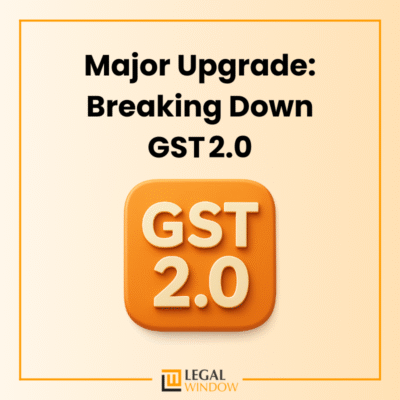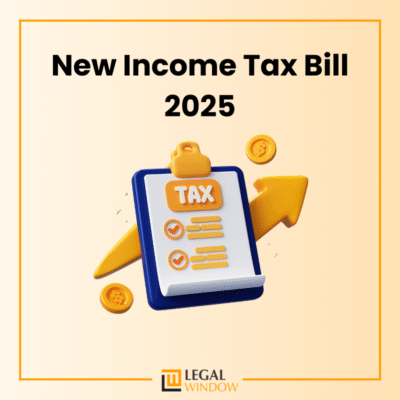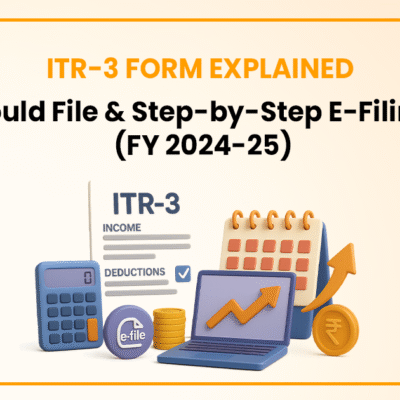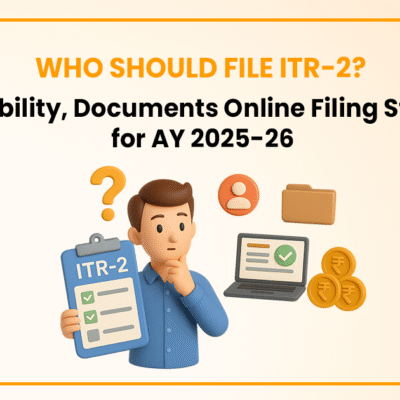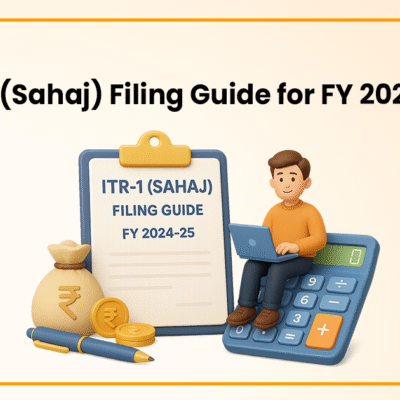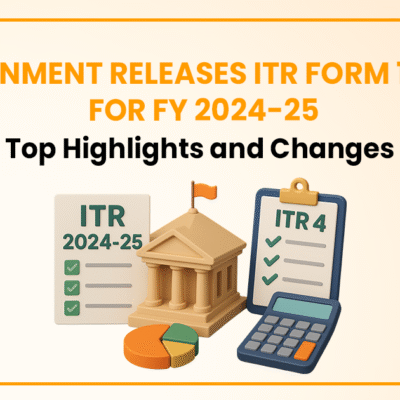Income Tax Rates for FY 2021-22 & FY 2022-23 & AY 2022-23 & 2023-24
- April 8, 2022
- Income Tax
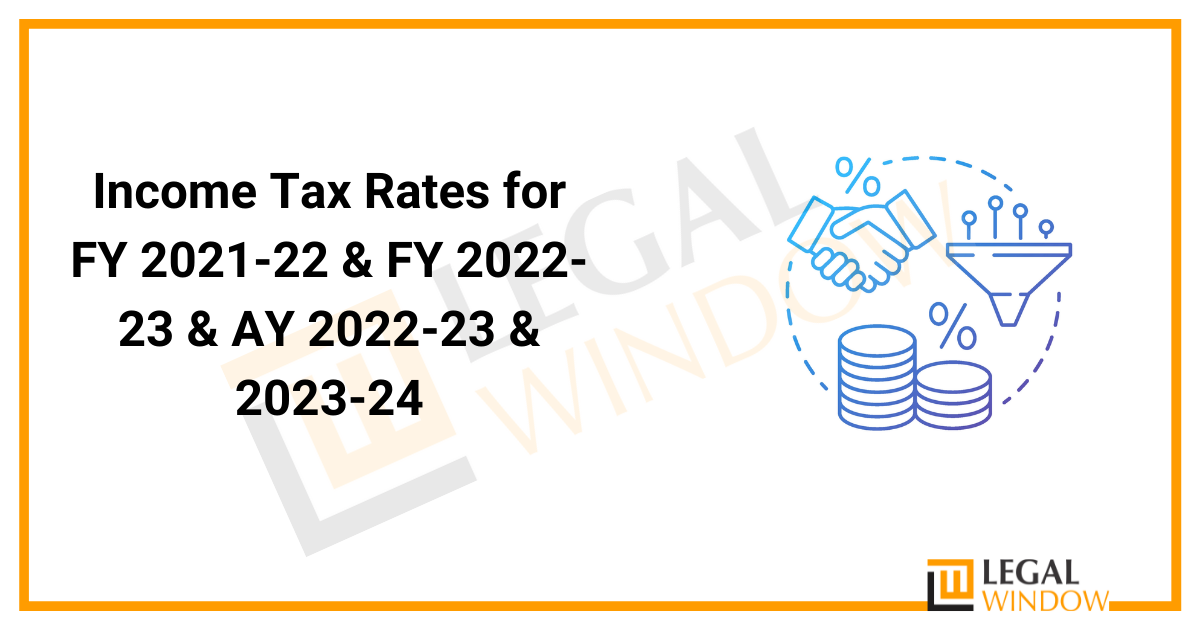
According to the Income Tax Act, 1961 of India, Income Tax is levied on all individuals, HUFs, partnership businesses, LLPs, and companies. Individuals are taxed according to the slab system if their income exceeds the minimum threshold level (known as the basic exemption limit). In this article, we will be discussing Income Tax Rates for FY 2021-22 & FY 2022-23.
Income Tax Rate
Individual taxpayers in India pay income tax based on a slab structure. A slab system means that various tax rates are set for different income groups. It indicates that the tax rates continue to rise as the taxpayer's income rises. This sort of taxation allows the government to have progressive and equitable tax systems. These income tax slabs are subject to change with each budget. These slab rates differ for various types of taxpayers.
The income tax rate changes according to the following factors:
- Personality Type (Individual, company etc)
- Income Source (Salary, House Property, Capital Gain, Business or Other Source Income)
- Age
- Place and status of residence
Assessment Year (AY) and Financial Year (FY)
Many taxpayers are perplexed by the distinction between the Financial Year (FY) and the Assessment Year (AY). They frequently treat them as the same, which leads to errors when filing their income tax returns.
- Financial Year: A Financial Year (FY) is the time from 1 April to 31 March — the fiscal year in which you generate an income.
- Assessment Year: The assessment year (AY) is the year that follows the fiscal year (FY). This is the moment when the money produced throughout the fiscal year is assessed and taxed. Both FY and AY begin on April 1 and finish on March 31. For example, the assessment year for FY 2020-21 is AY 2021-22.Because there is no change in tax rates in the Finance Bill/Budget 2022, the tax rates applicable to both assessment years are the same, with the exception of a few modifications planned in Budget 2022 that are listed individually in the article.
Individual Tax Rates (Resident / Non-Resident) for Financial Years 2021-22 & 2022-23
These slab rates differ for various types of taxpayers. Income tax has defined three types of "individual" taxpayers, including:
-
- Individuals (under the age of 60), including residents and non-residents
- Residency of Senior Citizens (60 to 80 years of age)
- Super elderly citizens that live in the area (aged more than 80 years)
- Applicable Rates on Income of Individual (other than senior and super senior)
| Income Range | Income Tax Rate |
| 0 – Rs. 2 ,50, 000 | Nil |
| Rs. 2,50,000 to Rs. 5,00,000 | 5% |
| Rs. 5,00,000 to Rs. 10,00,000 | 20% |
| Above Rs. 10,00,000 | 30% |
- Applicable Rates on Income of Individual (senior citizen),
| Income Range | Income Tax Rate |
| Up to Rs. 3,00,000 | Nil |
| Rs. 3,00,000 to Rs. 5,00,000 | 5% |
| Rs. 5,00,000 to Rs. 10,00,000 | 20% |
| Above Rs. 10,00,000 | 30% |
- Applicable Rates on Income of Individual (Super senior citizen)
| Income Range | Income Tax Rate |
| Up to Rs. 5,00,000 | Nil |
| Rs. 5,00,000 to Rs. 10,00,000 | 20% |
| Above Rs. 10,00,000 | 30% |
- Surcharge: If an assessee's total income exceeds certain restrictions, a surcharge is paid at the following rates on the amount of income tax:
| Income Range | Surcharge Rate |
| Rs. 50 Lakhs to Rs. 1 Crore | 10% |
| Rs. 1 Crore to Rs. 2 Crores | 15% |
| Rs. 2 Crores to Rs. 5 Crores | 25% |
| Exceeding Rs. 5 crores | 37% |
- Health and Education Cess: A health and education cess of 4% is collected on the amount of income tax plus surcharge.
- Rebate under section 87A: Section 87A allows a resident individual (with a net income of less than Rs. 5, 00,000) to claim a tax relief. It is tax deductible before calculating the education cess. The rebate is equal to 100% of income tax or Rs. 12,500, whichever is less.
Income Tax Rates for Hindu Undivided Family (HUF), Association of Persons (AOP), Body of Individuals (BOI), and Other Artificial Jurisdictional Persons for FY 2021-22 and 2022-23
The Tax rates are as follows:
| Income Range | Income Tax Rate |
| 0 – Rs. 2 ,50, 000 | Nil |
| Rs. 2,50,000 to Rs. 5,00,000 | 5% |
| Rs. 5,00,000 to Rs. 10,00,000 | 20% |
| Above Rs. 10,00,000 | 30% |
Surcharge and Health and Education Cess: Same as Individual Rates Listed Above.
Special Rates of Income Tax for Individual & HUF under Section 115BAC for FY 2021-22 & FY 2022-23
Individuals and HUFs will be able to pay taxes at the following lower rates starting in Assessment Year 2021-22, according to the Finance Act, 2020:
| Income | Rate |
| Up to 2,50,000 | Nil |
| From 2,50,001 to 5,00,000 | 5 % |
| From 5,00,001 to 7,50, 000 | 10 % |
| From 7,50,001 to 10,00,000 | 15 % |
| From 10,00,001 to 12,50,000 | 20 % |
| From 12,50,001 to 15,00,000 | 25 % |
| Above 15,00,000 | 30 % |
The surcharge, Health and Education Cess, and Rebate under Section 87A: Same as Rates for Individuals listed above.
Tax rates applicable To Company for Financial Years 2021-22 and 2022-23
- Domestic Company: The following are the standard income tax rates for domestic companies:
| Criteria for Turnover | Assessment Year 2022-23 | Assessment Year 2023-24 |
| Where the previous year's total turnover or gross receipts did not reach Rs. 400 crore in 2020-21. | Not Applicable | 25% |
| Where the preceding fiscal year's total turnover or gross receipts did not exceed Rs. 400 crore | 25 % | Not Applicable |
| Any other domestic organisation | 30 % | 30 % |
Surcharge: The amount of income tax is raised by a surcharge equal to the stated percentage of the tax: -
| Income | Rate |
| Rs. 1 Crore to Rs.10 Crore | 7% |
| Above Rs. 10 Crore | 12% |
Health and Education Cess: The amount of income tax and the appropriate surcharge will be enhanced further by a health and education cess of 4% of such income-tax and surcharge.
Domestic companies are subject to special tax rates: The following are the special income-tax rates that apply to domestic companies:
| Company | Tax Rate |
| If chose section 115BA | 25% |
| If chose section 115BAA | 22% |
| If chose section 115BAB | 15% |
It is suggested in Budget 2022 to change section 115BAB to move the start date of manufacture or production of any article or thing from March 31, 2023, to March 31, 2024. This change will become effective on April 1, 2022, and will apply to the assessment year 2022-23 and the following assessment years.
Surcharge: In the case of a corporation selecting for taxability under Section 115BAA or Section 115BAB, the surcharge rate is a flat 10%, regardless of total income.
Health and Education Cess: The amount of income tax and the appropriate surcharge will be enhanced further by a health and education cess of 4% of such income-tax and surcharge.
- Foreign Company: The following are the standard income tax rates for foreign companies:
| Nature of Income | Tax Rate |
| Royalty received from the Government or an Indian concern pursuant to an agreement entered into with the Indian concern after March 31, 1961, but before April 1, 1976, or fees for rendering technical services pursuant to an agreement entered into with the Indian concern after February 29, 1964, but before April 1, 1976, and where such agreement has been approved by the Central Government in either case. | 50% |
| From other Income | 40% |
Surcharge: The amount of income tax is raised by a surcharge equal to the stated percentage of the tax: -
| Income | Rate |
| Rs. 1 Crore to Rs.10 Crore | 2% |
| Above Rs. 10 Crore | 5% |
Health and Education Cess: The amount of income tax and the appropriate surcharge will be enhanced further by a health and education cess of 4% of such income-tax and surcharge.
Income Tax Rates for Partnership Firm & Limited Liability Partnership for Financial Year 2021-22 & FY 2022-23
A partnership firm including an LLP is subject to a 30% tax rate.
Surcharge: Where the total income exceeds one crore rupees, the amount of income tax is raised by a surcharge of 12 percent of the tax. The fee, however, will be subject to marginal relief (where income exceeds one crore rupees, the total amount payable as income-tax and surcharge shall not exceed total amount payable as income-tax on total income of one crore rupees by more than the amount of income that exceeds one crore rupees).
Health and Education Cess: The amount of income tax and the appropriate surcharge will be enhanced further by a health and education cess of 4% of such income-tax and surcharge.
Income Tax Rates of Local Authority for Financial Year 2021-22 and 2022-23
The local government gets taxed at a rate of 30%.
Surcharge: Where the total income exceeds one crore rupees, the amount of income tax is raised by a surcharge of 12 percent of the tax. The fee, however, will be subject to marginal relief (where income exceeds one crore rupees, the total amount payable as income-tax and surcharge shall not exceed total amount payable as income-tax on total income of one crore rupees by more than the amount of income that exceeds one crore rupees).
Health and Education Cess: The amount of income tax and the appropriate surcharge will be enhanced further by a health and education cess of 4% of such income-tax and surcharge.
Income Tax Rates of Co-operative Society for Financial Year 2021-22 and 2022-23
Applicable normal rates are as follows:
| Income | Rate |
| Up to Rs. 10,000 | 10% |
| Rs. 10,000 to Rs. 20,000 | 20% |
| Above Rs. 20,000 | 30% |
Surcharge:
| Income | Rate |
| Rs. 1 Crore to Rs.10 Crore | 7% |
| Above Rs. 10 Crore | 12% |
Health and Education Cess: The amount of income tax and the appropriate surcharge will be enhanced further by a health and education cess of 4% of the total amount of income tax and surcharge.
Special tax rates for Co-operative societies
| Income | Rate |
| Any Income | 22% |
Additional Tax under Section 140B (for electing to submit an Updated ITR under section 139(8A))
A new section 140B has been proposed in Budget 2022 to provide for the tax due for electing to file a return under the proposed provisions, i.e. sub-section (8A) of section 139 of the Act.
| Furnishing Updated ITR | Additional Payable Tax |
| If a return is filed after the time limit set out in section 139, subsections (4) and (5), and before the end of the 12-month period after the end of the relevant assessment year. | 25 percent of the total amount of tax and interest due. |
| if the return is filed after the 12-month term from the end of the relevant assessment year has expired but before the 24-month period has expired from the end of the relevant assessment year. | 50 percent of the total amount of tax and interest due. |
Takeaway
The most important source of revenue for the Indian government is the income tax. It has been created as an unavoidable burden on residents in order to collect revenue for the country's growth and defence needs. Moreover, it may be used for a variety of things, including infrastructure development (roads, trains, bridges, dams, etc. ), public healthcare and education, defence, and civil services, to mention a few. Hence taxpayer is required to file their respective ITRs on time as per governments’ Income Tax Rates for FY 2021-22 & FY 2022-23.
Connect to our Experts to file your Income Tax Return.
Company Secretary and diligent learner deeply immersed in the world of corporate law, compliance, and governance with a focus on developing a robust foundation in legal principles and corporate practices. Passionate about exploring the intricacies of company law, regulatory compliance, and corporate governance.
Categories
- Agreement Drafting (23)
- Annual Compliance (13)
- Change in Business (37)
- Company Law (150)
- Compliance (90)
- Digital Banking (3)
- Drug License (4)
- FEMA (17)
- Finance Company (42)
- Foreign Taxation (9)
- FSSAI License/Registration (15)
- GST (124)
- Hallmark Registration (1)
- Income Tax (214)
- Latest News (36)
- Miscellaneous (170)
- NBFC Registration (8)
- NGO (18)
- SEBI Registration (6)
- Section 8 Company (10)
- Start and manage a business (27)
- Startup/ Registration (134)
- Trademark Registration/IPR (48)
Recent Posts
- Major Upgrade: Breaking Down GST 2.0 September 15, 2025
- New Income Tax Bill 2025 August 27, 2025
- ITR-3 Form Explained: Who Should File & Step-by-Step E-Filing Guide (FY 2024-25) June 25, 2025
All Website Tags
About us
LegalWindow.in is a professional technology driven platform of multidisciplined experts like CA/CS/Lawyers spanning with an aim to provide concrete solution to individuals, start-ups and other business organisation by maximising their growth at an affordable cost.


